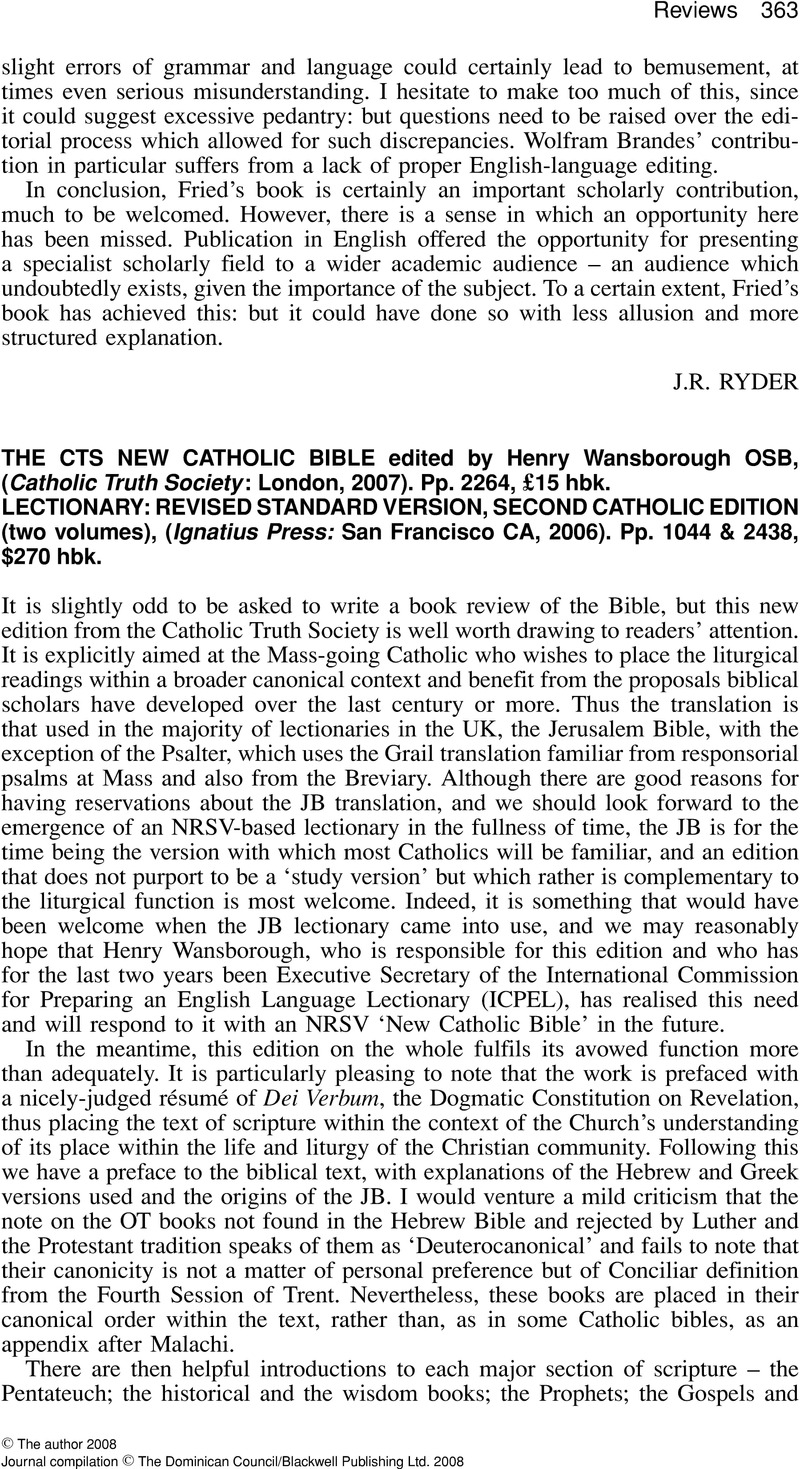No CrossRef data available.
Article contents
The CTS New Catholic Bible edited by Henry Wansborough OSB, (Catholic Truth Society: London, 2007). Pp. 2264, £15 hbk. - Lectionary: Revised Standard Version, Second Catholic Edition (two volumes), (Ignatius Press: San Francisco CA, 2006). Pp. 1044 & 2438, $270 hbk.
Review products
The CTS New Catholic Bible edited by Henry Wansborough OSB, (Catholic Truth Society: London, 2007). Pp. 2264, £15 hbk.
Lectionary: Revised Standard Version, Second Catholic Edition (two volumes), (Ignatius Press: San Francisco CA, 2006). Pp. 1044 & 2438, $270 hbk.
Published online by Cambridge University Press: 01 January 2024
Abstract
An abstract is not available for this content so a preview has been provided. Please use the Get access link above for information on how to access this content.

- Type
- Reviews
- Information
- Copyright
- Copyright © The author 2008. Journal compilation © The Dominican Council/Blackwell Publishing Ltd. 2008


